StereoPi V2
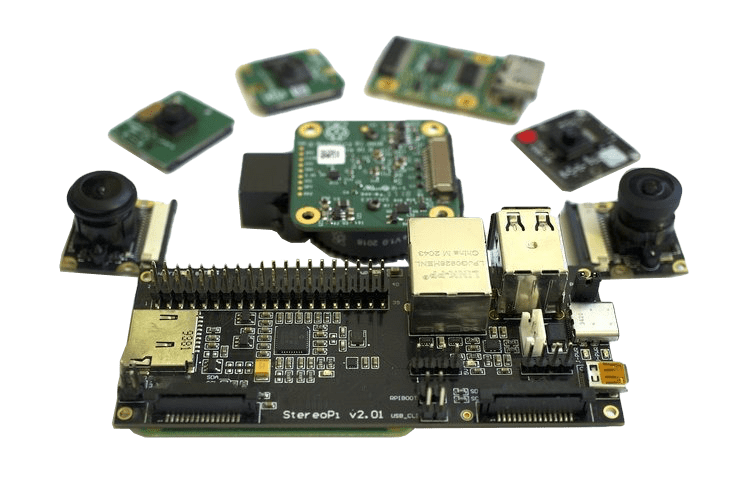
Meet the Stereo Pi V2
StereoPi is an open source stereoscopic camera based on Raspberry Pi. It can capture, save, livestream, and process real-time stereoscopic video and images. StereoPi opens up countless possibilities in robotics, AR/VR, computer vision, drone instrumentation, panoramic video, and more.
The world of stereoscopic video awaits! This board is the ultimate interface between two cameras and a Raspberry Pi Compute Module 4.
It comes with all the bells and whistles, including Ethernet, dual USB ports, GPIO header, microSD slot, HDMI output, and more.
To use this board, you will need your own Raspberry Pi Compute Module 4, cameras, camera ribbon cables, and power cable.
The board comes with two short power cables.
New Key Features
Friendly Powering Method
You can now power the Stereo Pi v2 the same way as the Raspberry Pi 4! Just connect the USB-C power cable, and it works! Unlike the StereoPi V1 micro-USB connector, the USB-C connector on this new edition supports regular powering.
Hot-swap reserved power!
Both USB-C or JST connectors can be used to power up your StereoPi v2. You can swap them on the go without any work interruptions!
Configurable power switch option
To give you more flexibility with the enclosure design, two pins have been added on the board. You can now use an external switch that you can place anywhere to fit your design! No need to worry about the peak current your switch can handle! A new power management chip, able to commutate up to 4A current, will allow you to use tiny switches intended for an extremely low load!
Power Over Ethernet – PoE!
The optional PoE HAT allows you to power StereoPi 2 over Ethernet. And guess what? The hot-swapped reserved power features will still work – a second power source can be used over the USB-C connector.
Hello, Camera Hackers!
For advanced users, we put all I2C camera lines on the board with 0 resistors gaps. This means you can use all the I2C you need for your special sensors. By physically connecting them to the appropriate GPIOs, you have hidden “dev board” features on the StereoPi V2. In addition to I2C, we pulled some other lines too.
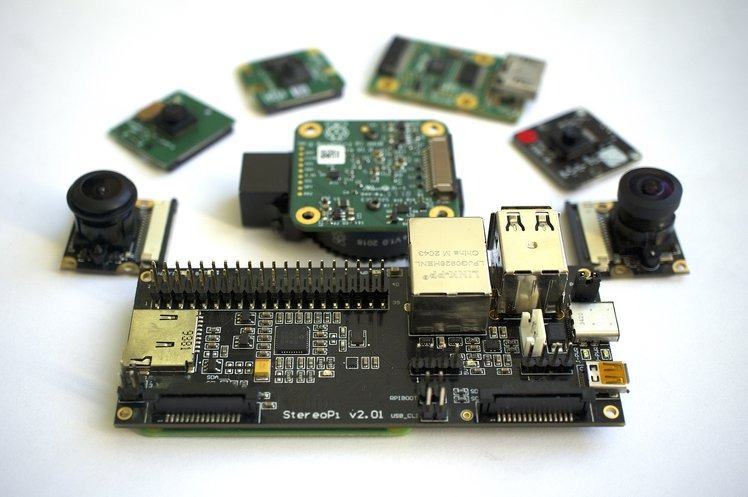
Say “hi” to the new Compute Module 4!
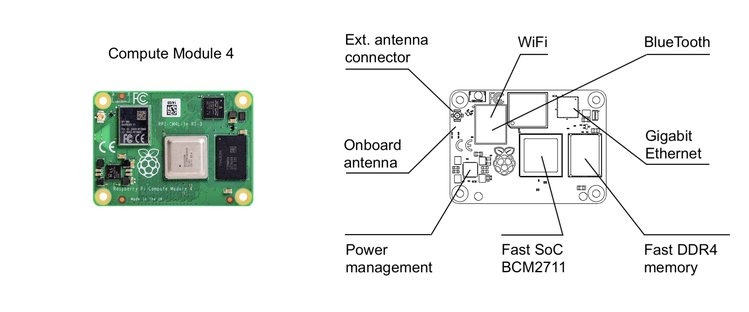
More power!
With the new SoC module from Broadcom, you have up to twice the speed in your OpenCV Computer Vision and DNN applications! And the fast DDR4 memory will add more speed to your memory-intensive applications (e.g. video capture and processing)
WiFi onboard!
Fast two-band Wi-Fi! No more USB dongle – you have a tested solution with brilliant drivers. Hey, drone makers! Did you know you can use an external antenna now? This is a big deal for your long-range FPV solutions (like WiFibroadcast, OpenHD, etc.)! Ah, and maybe WiFi boosters… You know what we mean, right? ☺
Advanced wireless management
Using the new CM4 wireless management features, you can physically power down your WiFi or Bluetooth through the software! Thanks to multifunctional GPIOs, introduced with the CM4, you can both power on/ off onboard wireless devices, and indicate their status by LED.
Gigabit Ethernet!
Thanks to the dedicated 1Gbit ethernet on the new Compute Module 4, there is no more compromise between the USB speed and Ethernet bandwidth!
BLUETOOTH 5.0, BLE!
All your project ideas for Bluetooth remote control can come true!
Extremely fast eMMC!
If you plan to use the StereoPi in industrial solutions, you can choose the eMMC equipped Compute Module 4. This fast and reliable storage is available with 8, 16, or 32Gb options!
StereoPi is Easy to Use With Other Familiar Tools
We’ve already made many demos of StereoPi integrating with other tools, including:
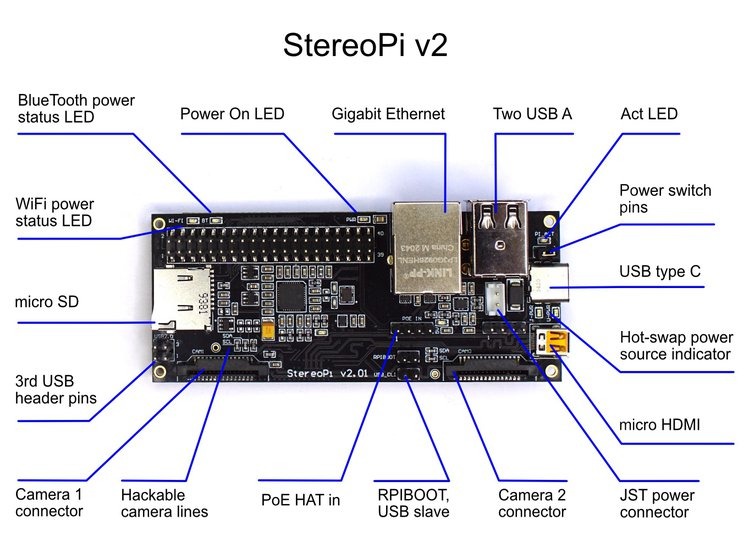
Example Video
The video below was captured by running this simple command from a Raspbian terminal:
raspivid -3d sbs -w 1280 -h 480 -o 1.h264
Example Image
Taking a stereoscopic image is just as easy using:
raspistill -3d sbs -w 1280 -h 480 -o 1.jpg
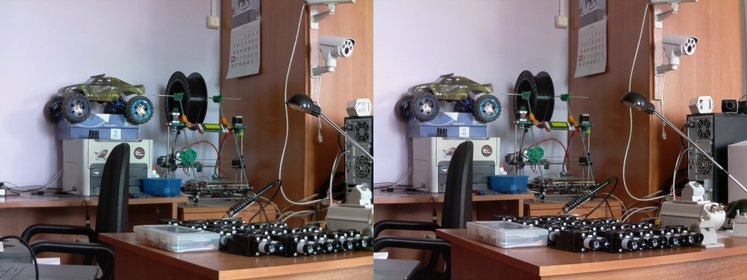
StereoPi In Action
FEATURES
- Raspberry Pi Compatibility:
- Raspberry Pi Compute Module 1
- Raspberry Pi Compute Module 3
- Raspberry Pi Compute Module 3 Lite
- Raspberry Pi Compute Module 3+ 8 GB / 16 GB / 32 GB eMMC flash
- Raspberry Pi Compute Module 3+ Lite
- Video:
- input: two 15-pin CSI-2 camera connectors
- output: HDMI
- Camera Support:
- Raspberry Pi camera V1 (OV5647 sensor)
- Raspberry Pi camera V2 (Sony IMX 219 sensor)
- HDMI video capture module (single mode, on Toshiba TC358743XBG chip)
- Connectivity:
- GPIO: 40-pin classic Raspberry Pi header
- USB: 2 x USB Type-A, 1 x USB pin header
- Ethernet: RJ45 jack
- Storage:
- microSD card slot (accessed by Raspberry Pi CM3/3+ Lite)
- Power:
- 5 VDC input via two-pin header
- manual power switch
- Software:
- firmware update via Micro USB connector
- runs standard Raspbian
- excellent Python support
- tons of example code
DIMENSIONS
Width x Length: 90 mm x 40 mm
Height: 23 mm (standard edition) / 15 mm (slim edition)
